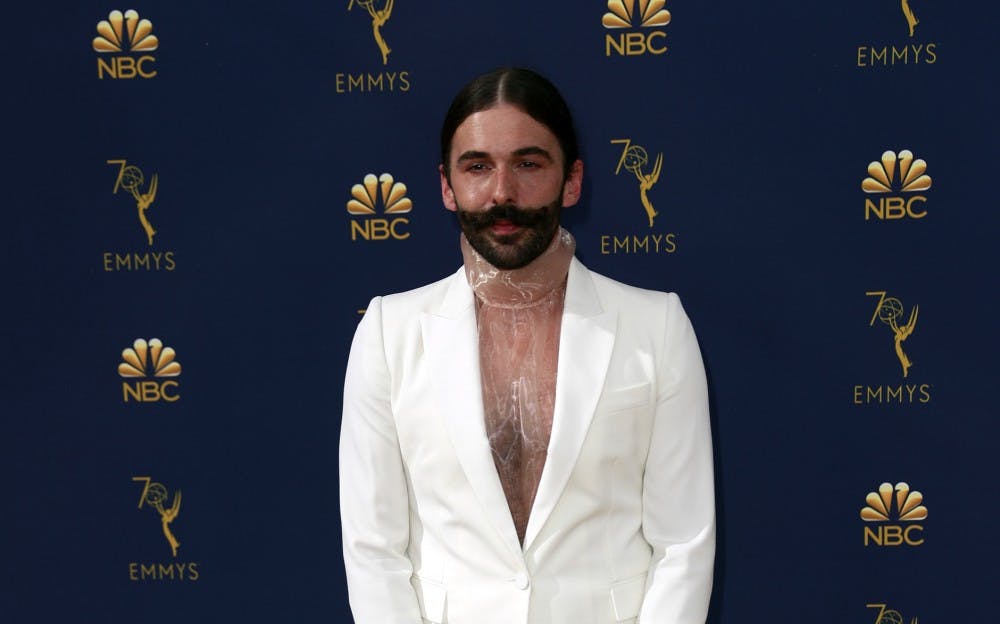
If you aren't aware of who Jonathan Van Ness is, aka the hair stylist extraordinaire from Netflix’s Emmy Award-winning series 'Queer Eye,' then you’re missing out.


If you aren't aware of who Jonathan Van Ness is, aka the hair stylist extraordinaire from Netflix’s Emmy Award-winning series 'Queer Eye,' then you’re missing out.
If you’re inclined to do a quick Google search, you’ll find his discussion of partnership with Planned Parenthood and images of Van Ness breaking gender norms via his clothing choices.
Van Ness has been especially relevant and memorable following his debut on 'Queer Eye' in February 2018, but unlike other television personalities, he has individually had huge impact on the media in the last few months.
Three months ago, he came out as non-binary, but has chosen not to use specific gendered pronouns, meaning he/him, she/her and they/them are all appropriate to use when referring to him.
Then, on Sep. 21, The New York Times published a profile piece about Van Ness in which the star was portrayed in a drastically different light. For the first time, we saw Van Ness' animated and merry personality dissipate and become replaced by remarkable vulnerability. In the article, Van Ness not only discusses sexual abuse he faced at a young age, but also his history of drug addiction and an HIV-positive diagnosis at age 25.
When someone who has such vast influence in the media comes forth and acknowledges sometimes painful details and memories from their past, they are helping people, especially young adults, by letting them know they are not alone and will find success.
The ability to relate to someone like Van Ness is huge because it proves that despite all the bad things that can happen to a person in this world, they do not determine a person's level of happiness, worth or success. Grim situations do not determine a person's potential or future. Despite all the bad in the world, the good can and will outweigh it.
It’s not easy for anyone to be honest and vulnerable, let alone public figures — the media is always waiting and preparing to run a story. Oftentimes, as reporters, I think it's forgotten that the people we're assuming we understand and are reporting about actually face real emotions and consequences based on articles we write and present to the world. For Van Ness to share his truth with the world is not only a brave action, but selfless, as his story has the potential to help many.
While I think it’s important for celebrities to come forward and talk about their failures and tragedies, I also believe there are some that do it for the wrong reasons.
We live in a time where information about everyone's personal lives is only a few clicks away. Social media influencers have become the biggest example of this. Before I explain, you might be wondering what exactly a social media influencer is. A social media influencer is someone who has established a semi-large following, usually on Instagram, and credibility in a designated industry, such as modeling or vlogging.
Some of these influencers are constantly posting extremely personal information to their social media accounts. It comes across very impersonal and transparent, as though they’re doing it for attention or sympathy, which they arguably are. There’s a huge difference between being sensitive to encourage others to do the same versus doing it for personal gain. These social media posts have yet to offer a sense of validation or concern to the people viewing them.
More celebrities, or public figures in general, should tell their stories the way Van Ness did. Not only was it admirable, but also genuine. It didn’t reek of attention-seeking antics. We could all learn a lot from the way he chose to reveal his past. There are lessons about vulnerability, honesty and compassion buried deep within The New York Times article and for that, I say thank you.
Support student media! Please consider donating to The State News and help fund the future of journalism.